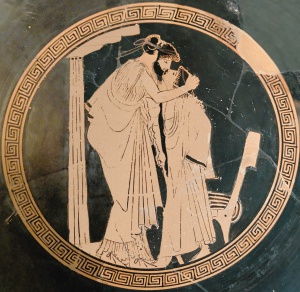(Boylove Documentary Sourcebook) - "Love Song for Chrysokomos (Goldenlocks)" by Angelo Ambrogini Poliziano, Late 15th Century (full-text poem)

From Gay and Lesbian Poetry: An Anthology from Sappho to Michelangelo, edited by James J. Wilhelm (Abingdon, Oxon; New York: Routledge, 2013). First published in 1995 by Routledge.
26 LOVE SONG FOR CHRYSOKOMOS (GOLDENLOCKS)
Watch over me from heaven while within my arms I hold my boy,
And don’t envy me, Zeus, because I envy no other.
Be contented, Zeus, be contented with your Ganymede, and leave to me
My shiny Chrysokomos, who to me is sweeter than honey.
O how happy I am—three and four times! O yes, I have kissed—
Truly kissed your mouth, you delicious boy-love!
O mouth, O locks, O smile, O light from your eyes!
O gods, truly you are mine, you delightful boy, yes mine!
I say you are truly mine, my little lover boy! How much I have anguished,
How much I have suffered and undergone to receive this prize!
My heart, why now are you suffering torment, as you did before? There’s no
Danger now; you shouldn’t be trembling, O heart!
Because the thing that once destroyed us and made us fearful—look!
I now hold him vanquished between my arms.
So take this, my goddess, take this dove to place on your altar,
And arrange for me that this joy shall be eternal!
And you, rise up! How much more gently you inspire my love
As you hold my tongue intertwined in your mouth, O my boy!
